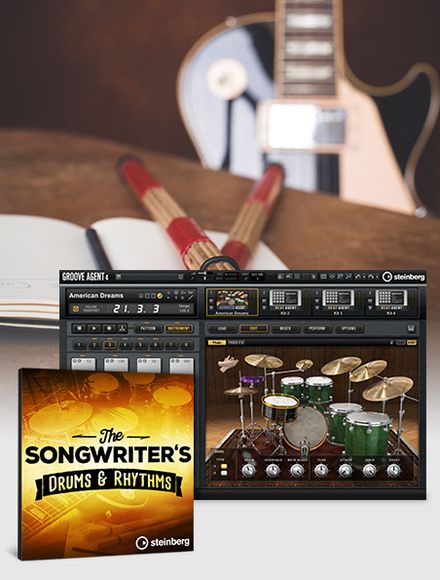


Cubase 6 included VSTs such as HALion Sonic SE, Groove Agent ONE, LoopMash 2 and VST Amp Rack. A new version of VST, VST3, was introduced with Steinberg's Cubase 4 which introduced improved handling of automation and audio output, native sidechaining, and many other features.
GROOVE AGENT 4 SE SOFTWARE
This technology has become the de facto standard for other DAW software, when integrating software based instruments on the Macintosh and Windows platforms. This made it possible for third-party software programmers to create and sell virtual instruments for Cubase. mp3 burned to CD or DVD as files, or to be published on the Web.Ĭubase VST 3.7 in 1999 introduced a virtual instrument interface for software synthesizers known as VSTi. wav file ready to be burned to a compact disc (CD) in Red Book format, or. The user can also mix the various tracks down into a stereo. MIDI parts can be edited using a piano roll, a dedicated drum editor, a score editor, or as a filterable complete list of MIDI events. Audio Warp Quantize: Create warp markers straight from hitpoints, both single audio loops as well as the entire arrangement can be non-destructively quantized.Changes can be applied either to only the selected notes or the entire MIDI part being edited. Key Editor Inspector: Provides precise control over chord drawing, chord inversions, quantization, transpositions, scale correction, note lengths, and legato.This overcomes one of the limitations of MIDI, where such controllers normally affect the entire channel (For example, all notes of a chord are equally affected by a pitch bend message). Note Expression: Allows MIDI controllers such as pitch bend, volume, pan, and filters to be applied only to the selected notes.In other DAWs, this requires the use of complicated MIDI program changes and key switches. Expression Maps: Adds a lane to the Key Editor (Cubase's piano roll) that allows the user to define changes to the instrument's articulations and dynamics.Chords can be either entered manually or detected automatically. Chord Tracks: Helps the user keep track of chord changes, and can optionally be used to harmonize audio and MIDI tracks automatically, as well as trigger arpeggios and chords with basic voicings or voicings for piano and guitar.It has a number of features designed to aid in composition, such as: Cubase can be used to edit and sequence audio signals coming from an external sound source and MIDI, and can host VST instruments and effects.


 0 kommentar(er)
0 kommentar(er)
